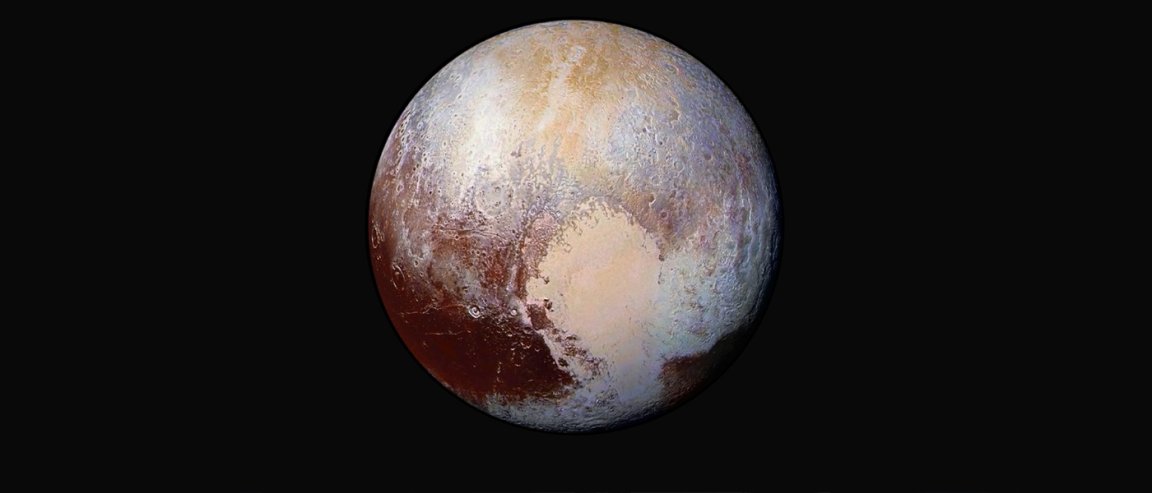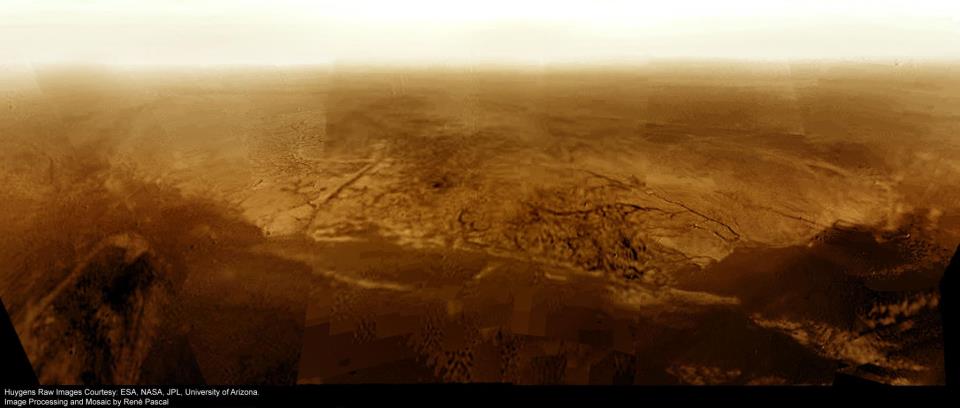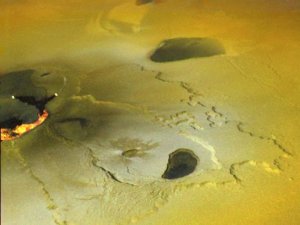
Our solar system is home to eight planets, a half a dozen “official” dwarf-planets (though the number may be up in the thousands, once we’ve fully explored the trenches of our solar system), an uncountable number of comets, asteroids, and planetesimals — in addition to more than 200 moons orbiting the outermost planets in our solar system.
Surprisingly, many of the solar system’s smaller rocky bodies exhibit incredibly strange features… features that make some of these places much more interesting than their larger counterparts. However, most of the objects in our solar system are horrifyingly dangerous places that you wouldn’t want to live on for an extended period of time (or really even visit). Of course, at the current time, all of the objects in our solar system are uninhabitable (aside from the Earth) and will remain so without a slew of changes taking place.
With that said, some seem to be a bit worse than others. So here are our top 4 Worst Places to Live, in no particular order.
4. Pluto
Poor Pluto. It’s like the bastard planet of our solar system. What we giveth, we (Neil deGrasse Tyson specifically) taketh away. In addition to being about a kabillion miles away from the center of the solar system, this poor guy didn’t even have the time to complete an entire orbit before being demoted to a dwarf planet. However, I’m going to stray away from that discussion. Pluto would be an incredibly horrible place to live (regardless of its formal designation).
For starters, using our current technology, it would take well over a decade just to travel to this distant world. This mean that if we were able to colonize the dwarf-planet, it would take several years for our space crafts to ship any supplies to humans living there (and you think it’s annoying when you have to take 15 minutes out of your day to run to the store for toilet paper). In addition to this, one must have an unusual fondness for cold weather and darkness in order to consider Pluto a viable candidate for a vacation, let alone permanent settlement.

Pluto is just as small as it is distant. At only 1,455 miles (2,352 km) across, Pluto is 20% as “big” as Earth (about the size of Russia) and only 0.2% as massive. Furthermore, its extremely elliptical orbit takes it cruising around the sun at an average distance of 3.65 BILLION miles (or 5.87 billion km). This means that it takes the tiny object some 248 years to complete one full revolution around the sun.
Since it was discovered in 1930 and demoted to a dwarf planet just a few years ago, it didn’t even complete one orbit around the Sun and it had already been discovered and declassified as a planet. It’s also cool to note that, on occasion, Pluto’s orbit takes it closer to the sun than its nearest cosmic neighbor, Neptune, the outermost planet of our solar system.
On average, Pluto is about 39 times farther from the Sun than our planet is, so if any observers were located on Pluto, the Sun would appear 1/39th as big (or 0.026 times as big) as it does from Earth.
From such a distance, our Sun would be a small (but rather bright) point of light in our sky. Thus, it would be very difficult to discern the true nature of our parent star, which is imperative to our being. At this distance, it would seem like just another bright light in the sky…like any other star.
Another thing that is imperative to our survival is water, which Pluto has an abundance of. The catch? Most of it is frozen. Oh, and it’s frozen harder than conventional steel. So this water wouldn’t be all that great for drinking. However, it would probably be pretty cool to manufacture huge ice mansions using Plutonian ice. They would be rather resilient structures, but they would be far too cold for human to live in. Which brings us to the next problem with Pluto. You’d have to be well suited to subzero conditions to live here. The temperature hoovers just above absolute zero (around -230 C) when Pluto is at aphelion (the farthest distance it lies from the sun in its elliptical orbit).
On the upside, Pluto does have a very thin atmosphere (the atmospheric pressure is a mere 0.00000143% of Earth’s atmospheric pressure).
However, it is composed mainly of nitrogen, methane, and carbon monoxide—not a great combination for humans who need oxygen to breathe. Even more disheartening is the fact that the atmosphere is also completely frozen a considerable portion of the time, particularly when Pluto is amongst other KBOs (Kupier belt objects) in the outer reaches of the solar system. When it is inward, some of the gases will sublimate from the surface of the dwarf-planet as the temperatures rise to about – 400 degrees F, forming a considerably thin atmosphere.
3. Titan
Before you ask, yes, Titan IS perhaps the most “Earth-like” world in our solar system. It has shores, oceans, rivers, mountains, and valleys. All of these are reminiscent of Earth. However, there is an important distinction to make — While Earth’s surface is covered 70% by water, Titan is covered in hydrocarbons. Not sure about you guys, but I generally don’t bathe in methane or ethane (though I suspect showering in hydrocarbons is preferable to not showering at all).
Notably, Titan is the only world known to hold a subsurface body of liquid (besides Earth, of course). Most other bodies are much too cold or too hot to retain any sort of liquid on their surfaces. With Titan’s chilly temperatures, which hang around -289 degrees Fahrenheit (-178 degrees Celsius), water would be frozen solid. However, certain substances (ethane and methane) turn from a gas to a liquid at these temperatures.

Withstanding liquid aside, Titan would still be a stellar place to visit. In fact, I would put it on both the best places to live in our solar system, along with the worst. Mainly because Titan has many interesting features to explore (like the lakes and rivers). Also, you could strap on a pair of wings and fly. Due to Titan’s low surface gravity and dense atmospheric pressures, a person who weighs 100 pounds on Earth will only weigh 12 pounds on Titan. So you would need some good upper body strength, but it could be done…you could (slowly) flutter about the moon like a Titonian Superman!

Still, not to be a buzzkill or anything, but I suggest sticking to Earth. You might not be able to fly, but you can breathe (and we all know that a superman who can’t breathe is pretty lame). Unlike every other moon in our solar system, Titan DOES have an appreciable atmosphere that contains (again, like Earth) a large concentration of nitrogen with bits of methane and other carbon-rich compounds.
However, it is lacking in Oxygen — something imperative to our survival. If that weren’t enough of an issue, said atmosphere is more than ten times higher than Earth’s, extending some 370 miles (600 km) into space!
Also, it rains down thick drops of methane (a key component in petroleum used to power our cars) that are more than twice as large as the typical raindrops on Earth. The fact that these drops are so heavy, coupled with Titan’s low surface gravity and dense atmosphere, lead to the drops falling much more slowly than our snowflakes do.

In short, on Titan it rains gasoline, and it is so cold that said compounds are able to pool on the surface in liquid form, creating oceans, rivers, and lakes of methane and ethane — similar (in appearance) to ours here on Earth. Titan has plenty of mysteries left to unravel, as some astrobiologists think Titan is the most likely candidate to harbor some sort of extraterrestrial lifeforms. The problem is, we haven’t fully explored it yet, but hopefully, we will soon.
2. Venus
Whoever gave Venus, the second planet from the sun, the nickname “Earth’s Twin” was flat out WRONG. Except where size is concerned, Venus is not really all that similar to Earth. For starters, Venus’ atmosphere is chock-full of greenhouse gases like carbon dioxide. These gasses are responsible for making this planet ‘hellacious’ to the highest regard.

Our atmosphere, which is primarily responsible for distributing the energy (and heat) we receive from the sun, has the opposite effect of Venus. Instead of heating the planet so that it has a more tropical climate (with heaps of water in various forms), Venus’ atmosphere super-heats the planet. It is so hot that it is totally inhospitable for any kind of life that we are familiar with (at least on the surface of the planet).
Little was known about the planet until the Soviets launched the Venera program during the Space Race. Since Venus’ dense atmosphere is opaque to light at visible wavelengths, we couldn’t see what the surface was like. This led some to speculate that the planet was filled with exotic alien life.
When the first probe touched down and began transmitting data back to Earth, they [the Soviets] effectively achieved the first landing of a probe on an alien planet and the ONLY successful landing on the surface of Venus to this very day. Unfortunately, there was not alien life. In fact, the terrain was so incredibly volatile that the longest any of the probes lasted was 127 minutes (before it died a terrible, terrible crushing/melting death).

Through their observations, we discovered that the ridges and grooves seen on the surface of Venus were the result of tectonic deformations, indicating that Venus might have been geologically active at some point in its 4 billion year life-span (though this is debated, as some geologists believe the grooves were created by dynamic forces within the planet’s mantle).
Also, Venus’s day is longer than its year. Yes, you read that right. It takes more than 243 Earth days for Venus to complete an entire rotation on its axis, while it takes more than 225 Earth days to make a full orbit around the sun.
So, what would it be like to live on Venus? Not fun. Not fun at all. You would be suffocated by the toxic air almost instantly…and crushed by the tremendous atmospheric pressure (it’s so dense that walking on Venus’ surface would be like walking under 3,000 feet of water here on Earth ie., bad, very bad). Oh, and you would also be incinerated by the extreme temperatures and eventually dissolved by the high concentration of sulfuric acid, which actually falls from Venus’ cloud formations (however, the acid never makes it to the surface of the planet; it evaporates long before).
In short, one could cook a 16-inch pizza on Venus in just 7 seconds flat, but you would be dead before you could start your meal. Not cool, Venus. Not cool.
1. Io

If you’re looking for a more balmy climate, Io (the inner-most Jovian moon) might be your best bet. Despite it’s distance from the sun (a chilly 741 million miles [780 million km]), tidal stresses between this strange, cheese colored moon and its parent planet can warm this tiny world to temperatures exceeding those found on its sister moons (Europa, Callisto, and Ganymede).
The tidal forces of Jupiter and the other three Galilean moons cause so much stress on Io that there are more than 400 active volcanoes littering the surface of the moon, which is no more than 2,263 miles (3,642 km) in diameter. This makes Io one of the most geologically active body in our solar system.

The most powerful of Io’s volcanoes is Loki, which is also the most powerful volcano we’ve found in our solar system. It is capable of spitting lava more than 186 miles (300 km) up into space. Furthermore, exo-geologists have discovered a subsurface ocean of magma that extends more than 31 miles (50 km) beneath the low-density crust, feeding the volcano with energy to emit more heat than all of the volcanoes on Earth combined.
Lastly, Io is sometimes called a land of both fire and ice, as the surface temperatures on the large moon generally hang around about -202 degrees F (-130 degrees C), while the temperatures near the molten volcanoes can reach about 3000 degrees F (1649 degrees C), giving way to sulfur dioxide snowfields.
Even if you were able to find a patch of land with tame temperatures, you would still be fried by the extreme amount of radiation the moon receives from Jupiter. Thankfully, our Earth shields us from most of the radiation it receives from the sun, but Iowian’s (we totally just made that up) aren’t so lucky. Unlike Earth, they have no atmosphere or magnetic field to protect them. So it’s safe to say that living on Io would suck…but the view would be rather nice.